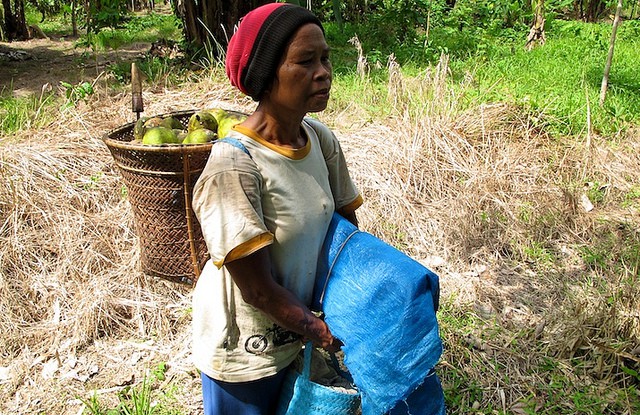The loss of Indonesia’s forests is not helping the country’s food security, according to a top official with the World Food Programme (WFP), the food assistance agency of the United Nations.
Indonesian food supply chains are focused on rice, maize and other cereals rich in energy but low on nutrients, said Myrta Kaulard, who until recently was country director of WFP Indonesia. Forest-based foods, on the other hand, offer a wealth of diverse types of foods and nutrients.
With forest loss, “what we see is the loss of very healthy traditions,” Kaulard said in an interview with Terry Sunderland, Principal Scientist at the Center for International Forestry Research (CIFOR). (Watch the full interview in the video above.)
“People that still live in isolated communities, who rely on traditional knowledge … have much better nutrition levels among their children than people who live in urban areas and are middle class,” Kaulard said. “This is because through their traditional knowledge, they can access this incredible wealth and variety of nutrients that are in the forest.”
Malnutrition rates remain stubbornly high in Indonesia, where about one-third of children suffer from growth deficiencies because of inadequate nourishment.
Kaulard was speaking during the recent Forests Asia Summit, in which the role of forest landscapes for food security was among the stated themes of the conference.
Recent CIFOR research in Africa has suggested that children who live in areas with more tree cover have more diverse and nutritious diets due to increased consumption of fruits, vegetables and bushmeat. Preliminary results indicate a similar relationship in Indonesia.
Given the strong links between forests and agriculture — and given that ever more forests are being felled in the name of food security — a “landscapes approach” to food security that considers forests and agriculture together rather than as distinct and separate has gained currency.
Awareness of this interconnectedness between forests and agriculture is growing, Kaulard said. “There is a need to really develop more awareness and focus more resources, research, development and innovation in this area” in order to balance food security with forests.
“Can you imagine a world without forests?” she said. “It would be the moon — can we live on the moon? Can we eat while on the moon? Can we prosper?”
We want you to share Forests News content, which is licensed under Creative Commons Attribution-NonCommercial-ShareAlike 4.0 International (CC BY-NC-SA 4.0). This means you are free to redistribute our material for non-commercial purposes. All we ask is that you give Forests News appropriate credit and link to the original Forests News content, indicate if changes were made, and distribute your contributions under the same Creative Commons license. You must notify Forests News if you repost, reprint or reuse our materials by contacting forestsnews@cifor-icraf.org.

